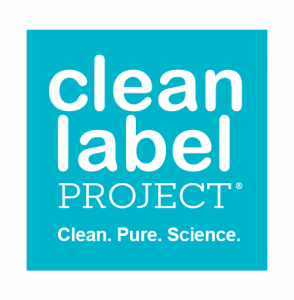New Report from Clean Label Project Uncovers Surprising Chemical Contaminants in Coffee, Including in Organic Brands
DENVER, CO, UNITED STATES, August 11, 2025 /EINPresswire.com/ -- A new study released today by the Clean Label Project reveals the presence of industrial and environmental contaminants in some of the nation’s most popular coffee products, including a surprising finding: every organic coffee sample tested contained AMPA, a chemical residue from glyphosate, despite its use being prohibited in organic farming.
The study, which tested 57 coffee products from 45 top-selling brands, evaluated thousands of data points across a range of harmful substances including heavy metals, pesticides, phthalates, acrylamide, and glyphosate byproduct AMPA. While coffee overall remains one of the cleaner food categories analyzed by Clean Label Project, the report finds that packaging type, roast level, and sourcing origin all play a role in exposure to unwanted chemicals.
“Consumers assume that labels like ‘organic’ mean protection from chemicals like glyphosate, but our data shows that’s not always the case,” said Molly Hamilton, Executive Director of Clean Label Project. “The detection of AMPA in 100 percent of organic samples is a wake-up call. Whether from environmental runoff or legacy contamination, this finding highlights the need for stronger safeguards and greater transparency in our food system.”
Additional findings from the study include:
● Organic coffee had 5 percent more AMPA on average than conventional coffee
● Canned coffee contained up to 66.9 percent more acrylamide, a potential carcinogen, than pods and 57.6 percent more than bags
● Dark roast coffee had lower acrylamide levels than both medium and light roasts
● Coffee pods had the highest levels of DEHP, a plasticizer linked to endocrine disruption, averaging 93.1 ppb, more than double that of bagged coffee
Despite the lack of federal regulations for chemical contaminants in coffee, Clean Label Project used international benchmarks such as the European Union’s food safety limits to evaluate safety. Only a select few brands met the stringent criteria for Clean Label Project’s Purity Award.
“Clean Label Project exists to bring hidden contaminants to light,” said Hamilton. “We believe consumers deserve to know what’s in the products they use every day, and we urge brands and regulators to take action in response to these findings.”
To read the full report and view tested brands, visit www.cleanlabelproject.org.
The study, which tested 57 coffee products from 45 top-selling brands, evaluated thousands of data points across a range of harmful substances including heavy metals, pesticides, phthalates, acrylamide, and glyphosate byproduct AMPA. While coffee overall remains one of the cleaner food categories analyzed by Clean Label Project, the report finds that packaging type, roast level, and sourcing origin all play a role in exposure to unwanted chemicals.
“Consumers assume that labels like ‘organic’ mean protection from chemicals like glyphosate, but our data shows that’s not always the case,” said Molly Hamilton, Executive Director of Clean Label Project. “The detection of AMPA in 100 percent of organic samples is a wake-up call. Whether from environmental runoff or legacy contamination, this finding highlights the need for stronger safeguards and greater transparency in our food system.”
Additional findings from the study include:
● Organic coffee had 5 percent more AMPA on average than conventional coffee
● Canned coffee contained up to 66.9 percent more acrylamide, a potential carcinogen, than pods and 57.6 percent more than bags
● Dark roast coffee had lower acrylamide levels than both medium and light roasts
● Coffee pods had the highest levels of DEHP, a plasticizer linked to endocrine disruption, averaging 93.1 ppb, more than double that of bagged coffee
Despite the lack of federal regulations for chemical contaminants in coffee, Clean Label Project used international benchmarks such as the European Union’s food safety limits to evaluate safety. Only a select few brands met the stringent criteria for Clean Label Project’s Purity Award.
“Clean Label Project exists to bring hidden contaminants to light,” said Hamilton. “We believe consumers deserve to know what’s in the products they use every day, and we urge brands and regulators to take action in response to these findings.”
To read the full report and view tested brands, visit www.cleanlabelproject.org.
Kate Shambrook
Clean Label Project
kate@dsjstrat.com
Legal Disclaimer:
EIN Presswire provides this news content "as is" without warranty of any kind. We do not accept any responsibility or liability for the accuracy, content, images, videos, licenses, completeness, legality, or reliability of the information contained in this article. If you have any complaints or copyright issues related to this article, kindly contact the author above.

